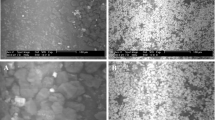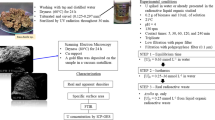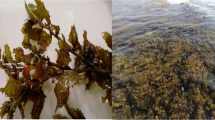Abstract
In response to the depletion of global uranium reserves and the radioactive contamination of wastewater, there is an urgent need to develop efficient, sustainable, and cost-effective uranium biosorbents. Herein, a green macroalga Rhizoclonium riparium was prepared for uranium (U(VI)) removal. The results showed that the maximum adsorption capacity of U(VI) was 80.96 mg g−1 (pH = 5, 298 K and 0.1 M NaNO3). The kinetics, isotherms and thermodynamics analysis revealed that the adsorption process was chemisorption, homogeneous monolayer adsorption, endothermic and spontaneous. Through the mechanism characterization, it was proved the adsorbed of uranium on R. riparium was mainly controlled by the complexation between U(VI) and –OH, –COOH, –NH2. Besides, the R. riparium possess high selectivity towards uranium and good recycling performance. This work highlights new opportunities for biosorbents to be obtained directly from nature and used to remove radioactive contamination.







Similar content being viewed by others
References
IPCC (2018) Global Warming of 1.5°C. An IPCC Special Report on the impacts of global warming of 1.5°C above pre-industrial levels and related global greenhouse gas emission pathways, in the context of strengthening the global response to the threat of climate change, sustainable development, and efforts to eradicate poverty
Commission E (2020) 2050 long-term strategy
Jiutian Z, Zhiyong W, Jianing K, Xiangjing S, Dong X (2022) Several key issues for CCUS development in China targeting carbon neutrality. Carbon Neutral 1:1–20
Parsons J, Buongiorno J, Corradini M, Petti D (2019) A fresh look at nuclear energy. Science 363(6423):105
Tang N, Liang J, Niu C, Wang H, Luo Y, Xing W, Ye S, Liang C, Guo H, Guo J, Zhang Y, Zeng G (2020) Amidoxime-based materials for uranium recovery and removal. J Mater Chem A 8(16):7588–7625
Burdeinyi D, Kutnii D, Levenets V, Turkin A, Marks N, Lindvall R, Treinen K (2021) Application of HRGS for forensic characterization of uranium oxides, pure uranium metals and uranium alloys. Appl Radiat Isot 177:109910
Hodkin DJ, Stewart DI, Graham JT, Burke IT (2016) Coprecipitation of 14C and Sr with carbonate precipitation: the importance of reaction kinetics and recrystallization pathways. Sci Total Environ 562:335–343
Yuan Y, Liao X, Fang Z, Liu N, Qiu F, Huang D, Wang B, Zhou Y (2022) Study of the performance of a bloom-forming cyanobacterium (Microcystis aeruginosa) on the biosorption of uranium. J Radioanal Nucl Chem 331(7):3183–3194
Esmaili Z, Barikbin B, Shams M, Alidadi H, Al-Musawi TJ, Bonyadi Z (2023) Biosorption of metronidazole using Spirulina platensis microalgae: process modeling, kinetic, thermodynamic, and isotherm studies. Appl. Water Sci 13(2)
Moreira VR, Lebron YAR, Freire SJ, Santos LVS, Palladino F, Jacob RS (2019) Biosorption of copper ions from aqueous solution using Chlorella pyrenoidosa: optimization, equilibrium and kinetics studies. Microchem J 145:119–129
Singhal RK, Basu H, Pimple MV, Manisha V, Basan MKT, Reddy AVR (2013) Spectroscopic determination of U(VI) species sorbed by the Chlorella (Chlorella pyrenoidosa) fresh water algae. J Radioanal Nucl Chem 298(1):587–592
Tran HN, Wang Y, You S, Chao H (2017) Insights into the mechanism of cationic dye adsorption on activated charcoal: The importance of π–π interactions. Process Saf Environ Prot 107:168–180
Wang X, Yu S, Wu Y, Pang H, Yu S, Chen Z, Hou J, Alsaedi A, Hayat T, Wang S (2018) The synergistic elimination of uranium (VI) species from aqueous solution using bi-functional nanocomposite of carbon sphere and layered double hydroxide. Chem Eng J 342:321–330
Orabi AH, Abdelhamid AE, Salem HM, Ismaiel DA (2021) Uranium removal using composite membranes incorporated with chitosan grafted phenylenediamine from liquid waste solution. Cellulose 2:1–19
Hamed A, Orabi A, Salem H, Ismaiel D, Saad G, Abdlhamid I, Elwahy A, Elsabee M (2022) An effective uranium removal using diversified synthesized cross-linked chitosan bis-aldehyde Schiff base derivatives from aqueous solutions. Environ Sci Pollut Res 1–22
Khawassek Y, Masoud A, Taha M, Hussein A (2018) Kinetics and thermodynamics of uranium ion adsorption from waste solution using Amberjet 1200 H as cation exchanger. J Radioanal Nucl Chem 315(3):493–502
Hussein A, Youssef W, El-Sheikh A (2019) Adsorption of uranium from aqueous solutions by expanded perlite. Radiochemistry 61(5):592–597
Gan J, Zhang L, Wang Q, Xin Q, Hu E, Lei Z, Wang H, Wang H (2023) Synergistic action of multiple functional groups enhanced uranium extraction from seawater of porous phosphorylated chitosan/coal-based activated carbon composite sponge. Desalination 545:116154
Hu R, Xiao J, Wang T, Chen G, Chen L, Tian X (2020) Engineering of phosphate-functionalized biochars with highly developed surface area and porosity for efficient and selective extraction of uranium. Chem Eng J 379:122388
Wang B, Li Y, Zheng J, Hu Y, Hu B (2020) Efficient removal of U(VI) from aqueous solutions using the magnetic biochar derived from the biomass of a bloom-forming cyanobacterium (Microcystis aeruginosa). Chemosphere 254:126898
Chen Z, Wang J, Pu Z, Zhao Y, Jia D, Chen H, Wen T, Hu B, Alsaedi A, Hayat T (2017) Synthesis of magnetic Fe3O4/CFA composites for the efficient removal of U(VI) from wastewater. Chem Eng J 320:448–457
Li Y, Dai Y, Tao Q, Xu L (2022) Synthesis and characterization of amino acid-functionalized chitosan/poly(vinyl alcohol) for effective adsorption of uranium. J Radioanal Nucl Chem 331(11):4753–4765
Acisli O, Khataee A, Karaca S, Sheydaei M (2016) Modification of nanosized natural montmorillonite for ultrasound-enhanced adsorption of Acid Red 17. Ultrason Sonochem 31:116–121
Li F, Li D, Li X, Liao J, Li S, Yang J, Yang Y, Tang J, Liu N (2016) Microorganism-derived carbon microspheres for uranium removal from aqueous solution. Chem Eng J 284:630–639
Lagergren S (1898) zur theorie der sogenannten adsorption gelöster stoffe, K. Sven. Vetenskapsakad., Handl., Band (24)4:1–39
Ho YS, McKay G (1998) Sorption of dye from aqueous solution by peat. Chem Eng J 70:115–124
Weber WJ, Morris JC (1963) Kinetics of adsorption on carbon from solutions. J Sanit Eng Div Am Soc Civ Eng 89:31–60
Mei D, Li H, Liu L, Jiang L, Ma F (2021) Efficient uranium adsorbent with antimicrobial function: oxime functionalized ZIF-90. Chem Eng J 425(1):130468
Kim J, Oyola Y, Tsouris C, Hexel CR, Mayes RT, Janke CJ, Dai S (2013) Characterization of uranium uptake kinetics from seawater in batch and flow through experiments. Ind Eng Chem Res 52(27):9433–9440
Zhu J, Liu Q, Liu J, Chen R, Zhang H, Li R, Wang J (2018) Ni-Mn LDH-decorated 3D Fe-inserted and N-doped carbon framework composites for efficient uranium (VI) removal. Environ Sci Nano 5(2):467–475
Shen J, Huang G, An C, Xin X, Huang C, Rosendahl S (2018) Removal of Tetrabromobisphenol A by adsorption on pinecone-derived activated charcoals: synchrotron FTIR, kinetics and surface functionality analyses. Bioresour Technol 247:812–820
Freundlich HMF (1906) Under die adsorption in lösungen. Z Phys Chem 57:385–470
Langmuir I (1918) The adsorption of gases on plane surfaces of glass, mica and platinum. J Am Chem Soc 40:1361–1403
Sureshkumar MK, Das D, Mallia MB, Gupta PC (2010) Adsorption of uranium from aqueous solution using chitosan-tripolyphosphate (CTPP) beads. J Hazard Mater 184:65–72
Morsy AMA (2015) Adsorptive removal of uranium ions from liquid waste solutions by phosphorylated chitosan. Environ Technol Innov 4:299–310
Cheng Y, Li F, Liu N, Lan T, Qing R (2021) A novel freeze-dried natural microalga powder for highly efficient removal of uranium from wastewater. Chemosphere 282:131084
Erkaya IA, Arica MY, Akbulut A, Bayramoglu G (2014) Biosorption of uranium by free and entrapped Chlamydomonas reinhardtii: kinetic, equilibrium and thermodynamic studies. J Radioanal Nucl Chem 299(3):1993–2003
Lee KY, Kim KW, Baek YJ, Chung DY, Lee EH, Lee SY, Moon JK (2014) Biosorption of uranium(VI) from aqueous solution by biomass of brown algae Laminaria japonica. Water Sci Technol 70(1):136–143
Yi Z, Yao J, Chen H, Wang F, Yuan Z, Liu X (2016) Uranium biosorption from aqueous solution onto Eichhornia crassipes. J Environ Radioact 154:43–51
Mohammed AAER (2020) Potentiality of quercetin-sodium hydroxide Spirulina platensis in uranium biosorption from waste effluent. Int J Environ Stud 77(1):48–60
Orabi AH, El-Sayed Abdelhamid A, Salem HM, Ismaiel DA (2020) New adsorptive composite membrane from recycled acrylic fibers and Sargassum dentifolium marine algae for uranium and thorium removal from liquid waste solution. J Radioanal Nucl Chem 326:1233–1247
Khan AA, Singh RP (1987) Adsorption thermodynamics of carbofuran on Sn(IV) arsenosilicate in H+, Na+ and Ca2+ forms. Colloids Surf 24:33–42
Zhao Y, Li J, Zhang S, Chen H (2013) Efficient enrichment of uranium (VI) on amidoximated magnetite/graphene oxide composites. RSC Adv 41:18952–18959
Ma D, Wei J, Zhao Y, Chen Y, Tang S (2020) The removal of uranium using novel temperature sensitive urea-formaldehyde resin: adsorption and fast regeneration. Sci Total Environ 735:139399
Fitri FRH, Lucia L, Hakovirta M (2021) Hydrothermal carbonization of soybean hulls for the generation of hydrochar: A promising valorization pathway for low value biomass. Environ Nanotechnol Monit Manag 16:100571
Dong Z, Zhang Z, Li Z, Feng Y, Dong W, Wang T, Cheng Z, Wang Y, Dai Y, Cao X, Liu Y, Liu Y (2021) 3D structure aerogels constructed by reduced graphene oxide and hollow TiO2 spheres for efficient visible-light-driven photoreduction of U(VI) in air-equilibrated wastewater. Environ Sci Nano 8:2372–2385
Mehio N, Ivanov AS, Ladshaw AP, Dai S, Bryantsev VS (2016) Theoretical study of oxovanadium (IV) complexation with formamidoximate: implications for the design of uranyl-selective adsorbents. Ind Eng Chem Res 55:4231–4240
Yang H, Liu X, Hao M, Xie Y, Wang X (2021) Functionalized iron-nitrogencarbon electrocatalyst provides a reversible electron transfer platform for efficient uranium extraction from seawater. Adv Mater 33:2106621
Wu K, Luan L, Xing J, Ma S, Xue Z, Xu W, Niu Y (2020) Removal of Zn (II) and Co(II) from N, N-dimethylformamide by polyamidoamine dendrimers decorated silica: performance and mechanism. J Mol Liq 308:113073
Lv Z, Yang S, Chen L, Alsaedi A, Hayat T, Chen C (2019) Nanoscale zero-valent iron/magnetite carbon composites for highly efficient immobilization of U(VI). J Environ Sci 76:377–387
Jin J, Li S, Peng X, Liu W, Zhang C, Yang Y, Han L, Du Z, Sun K, Wang X (2018) HNO3 modified biochars for uranium (VI) removal from aqueous solution. Bioresour Technol 256:247–253
Acknowledgements
This work was supported by the Natural Science Foundation of Jiangxi Province (No. 20192BAB214005) and National College Students Innovation and Entrepreneurship Training Program (No. 202110405023).
Author information
Authors and Affiliations
Contributions
NL: Conceptualization, Methodology, Writing-original draft. ZF: Investigation, Methodology. YX: Investigation, Methodology. MX, LZ: Validation, Writing-review and editing. BW: Methodology, Writing—review and editing. YY: Funding acquisition, Supervision.
Corresponding author
Ethics declarations
Conflict of interest
The authors declare that they have no known competing financial interests or personal relationships that could have appeared to influence the work reported in this paper.
Additional information
Publisher's Note
Springer Nature remains neutral with regard to jurisdictional claims in published maps and institutional affiliations.
Rights and permissions
Springer Nature or its licensor (e.g. a society or other partner) holds exclusive rights to this article under a publishing agreement with the author(s) or other rightsholder(s); author self-archiving of the accepted manuscript version of this article is solely governed by the terms of such publishing agreement and applicable law.
About this article
Cite this article
Liu, N., Fang, Z., Xu, Y. et al. Biosorption of uranium from aqueous solutions using a filamentous green macroalga: performances and mechanism. J Radioanal Nucl Chem 332, 3787–3798 (2023). https://doi.org/10.1007/s10967-023-09044-7
Received:
Accepted:
Published:
Issue Date:
DOI: https://doi.org/10.1007/s10967-023-09044-7




